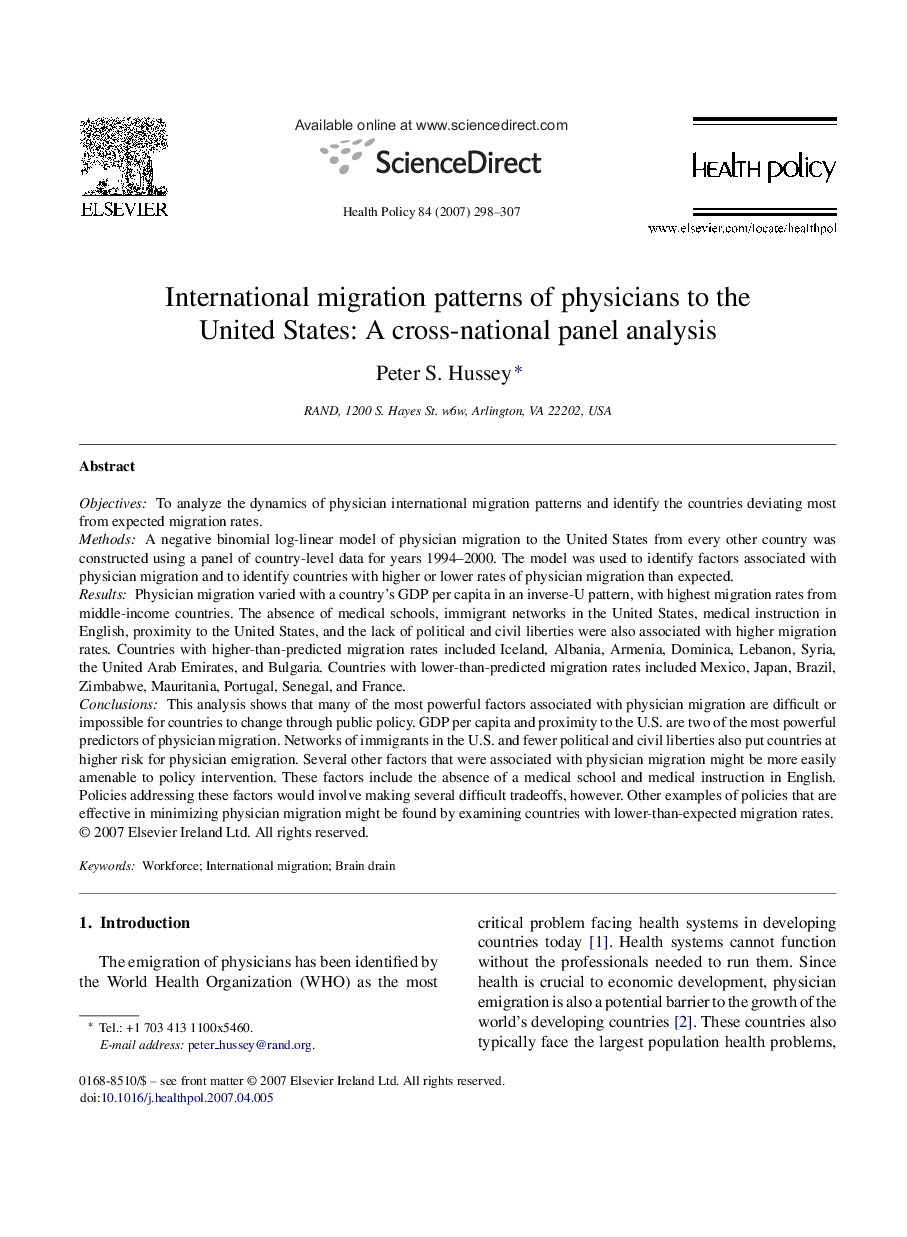| کد مقاله | کد نشریه | سال انتشار | مقاله انگلیسی | نسخه تمام متن |
|---|---|---|---|---|
| 4198774 | 1609038 | 2007 | 10 صفحه PDF | دانلود رایگان |

ObjectivesTo analyze the dynamics of physician international migration patterns and identify the countries deviating most from expected migration rates.MethodsA negative binomial log-linear model of physician migration to the United States from every other country was constructed using a panel of country-level data for years 1994–2000. The model was used to identify factors associated with physician migration and to identify countries with higher or lower rates of physician migration than expected.ResultsPhysician migration varied with a country's GDP per capita in an inverse-U pattern, with highest migration rates from middle-income countries. The absence of medical schools, immigrant networks in the United States, medical instruction in English, proximity to the United States, and the lack of political and civil liberties were also associated with higher migration rates. Countries with higher-than-predicted migration rates included Iceland, Albania, Armenia, Dominica, Lebanon, Syria, the United Arab Emirates, and Bulgaria. Countries with lower-than-predicted migration rates included Mexico, Japan, Brazil, Zimbabwe, Mauritania, Portugal, Senegal, and France.ConclusionsThis analysis shows that many of the most powerful factors associated with physician migration are difficult or impossible for countries to change through public policy. GDP per capita and proximity to the U.S. are two of the most powerful predictors of physician migration. Networks of immigrants in the U.S. and fewer political and civil liberties also put countries at higher risk for physician emigration. Several other factors that were associated with physician migration might be more easily amenable to policy intervention. These factors include the absence of a medical school and medical instruction in English. Policies addressing these factors would involve making several difficult tradeoffs, however. Other examples of policies that are effective in minimizing physician migration might be found by examining countries with lower-than-expected migration rates.
Journal: Health Policy - Volume 84, Issues 2–3, December 2007, Pages 298–307